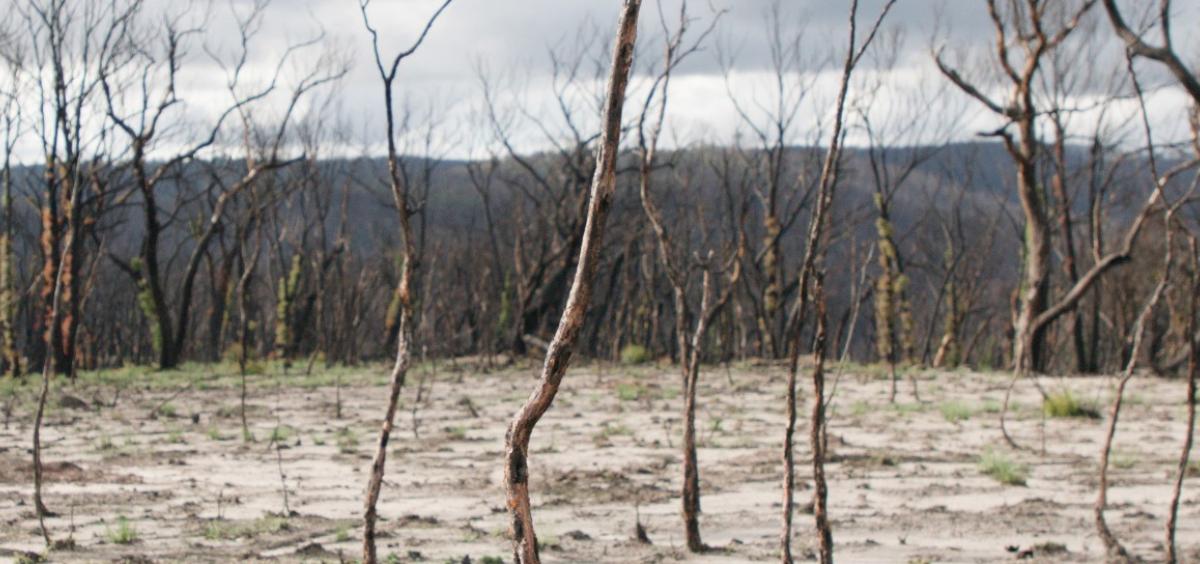
CORVALLIS, Ore. – A year after a global coalition of more than 11,000 scientists declared a climate emergency, Oregon State University researchers who initiated the declaration released an update today that points to a handful of hopeful signs, but shares continued alarm regarding an overall lack of progress in addressing climate risks.
“Young people in more than 3,500 locations around the world have organized to push for urgent action,” said Oregon State University’s William Ripple, who co-authored “The Climate Emergency: 2020 in Review,” published today in Scientific American. “And the Black Lives Matter movement has elevated social injustice and equality to the top of our consciousness.
“Rapid progress in each of the climate action steps we outline is possible if framed from the outset in the context of climate justice – climate change is a deeply moral issue. We desperately need those who face the most severe climate risks to help shape the response.”
One year ago, Ripple, distinguished professor of ecology in the OSU College of Forestry, and Christopher Wolf, a postdoctoral scholar at OSU, co-authored a paper published in BioScience in which more than 11,000 scientists from 153 nations declared a climate emergency. They presented graphics showing trends as vital signs to measure progress and provided a set of mitigation strategies.
Ripple and Wolf teamed up with scientists from Tufts University, the University of Sydney and the University of Cape Town on the Scientific American review, which reports pockets of progress while renewing calls for immediate, widespread action – including a declaration of a climate emergency by the United States and funding for mitigation.
“The climate emergency is here and accelerating more rapidly than most scientists anticipated,” Wolf said. “People are frightened – an illustration of that is the more than 1,800 climate emergency declarations issued around the world, by jurisdictions encompassing more than 820 million people.”
The scientists continue to point to six areas in which humanity should take immediate steps to slow down the effects of a warming planet:
“The adverse effects of climate change are much worse than had been expected and now threaten both the biosphere and humanity,” Ripple said. “The year 2020, one of the hottest years on record, also saw extraordinary fire activity in the western United States and Australia, a Siberian heat wave with record high temperatures exceeding 100 degrees within the Arctic circle, an Atlantic hurricane season resulting in more than $46 billion in damages, and deadly floods and landslides in South Asia that displaced more than 12 million people.”
The year wasn’t without climate action positives, the scientists note. Among them:
“Lockdowns associated with the pandemic resulted in a decrease in CO2 emissions of 7% in 2020 but this reduction is probably not going to be long-lived because there has been no major concurrent shift in the way we produce energy,” Ripple said. “This drop in emissions is a tiny blip compared to the overall buildup of greenhouse gases, which has resulted in all five of the hottest years on record occurring since 2015.”
The scientists note that no major industrialized country is on track to achieve the Paris Agreement target of limiting warming to 1.5 degrees Celsius.
“We’re at the point of needing a massive-scale mobilization to address the climate crisis,” Wolf said.
“A year ago, we were worried about poor progress on mitigating climate change. Now we are alarmed by the failure of sufficient progress in 2020. But aggressive, transformative change, framed against the backdrop of social justice, can ignite an enormous deployment that will let us avert the worst of the climate emergency.”
About the OSU College of Forestry: For a century, the College of Forestry has been a world class center of teaching, learning and research. It offers graduate and undergraduate degree programs in sustaining ecosystems, managing forests and manufacturing wood products; conducts basic and applied research on the nature and use of forests; and operates more than 15,000 acres of college forests.
Steve Lundeberg, 541-737-4039
steve.lundeberg@oregonstate.edu
William Ripple, 541-737-3056
bill.ripple@oregonstate.edu
Christopher Wolf, wolfch@oregonstate.edu
Click photos to see a full-size version. Right click and save image to download.